A. LEFT AND FINLAND IN POLITICS
LB : How would you define the left in Finland ?
Teemu : First of all, I would like to say that the following is my own analysis about the left. I don’t represent anyone and, only speak for myself. Nevertheless, I am now living in Sweden, where I am doing my PhD, and I have been active in France where I stayed one year and a half, therefore I can attempt to draw some comparisons between the three countries. In Finland, the Left Alliance1 follows the path traced by the New Left2, which splitted from the orthodox left. It displays less chauvinism than in France, where we sing La Marseillaise and wave the national flag at the meetings of La France Insoumise. Something you would not see in Finland! Finally, ecology has become a major issue for the left here in Finland. For this reason, the Left Alliance is now the most ambitious ecological here, more so than the Green League [Vihreä liitto]. In comparison, in Sweden, only the Green Party [Miljöpartiet de Gröna] speaks about “décroissance”, whereas the Left Party [Vänsterpartiet] is still stuck in an oldproductivist vision.
LB : When did the left last govern in Finland ?
Teemu : Last left-wing government, led by Sanna Marin between 2019 and 2023, was in power just before the present far-right government. It was a coalition between her Social Democratic Party [Suomen Sosiaalidemokraattinen Puolue], the Centre Party [Suomen Keskusta], the Green League, the Left Alliance, and the Swedish People’s Party [Ruotsalainen kansanpuolue]. I would not go as far as saying that she applied left policies, however. For instance, during that government, Finland destroyed more forests than ever before. Sanna Marin also pushed back on the European regulation regarding the conservation of natural habitats, and took away the right to strike of the healthcare sector’s workers during the Covid pandemic. The government also continued arms trade with apartheid-state Israel, that is now committing a genocide on the Palestinians.
LB : Do marxist theory play a role in politics in Finland ?
Teemu : Apart from Bernsteinian revisionism3, I would not say that Marxist ideology plays a major political influence in Finland, except in the social movement and academia. Afterall, Nordic welfare state is ideologically built on consensus politics between the government, employees and employers and materially on imperial relations of extraction4, on which the parties agree. Ironically, consensus politics is now the reason Finland feels politically stuck. If you think we are all working towards the same goal, how could you advocate the class struggle? If you are accustomed to negotiate with your opponents, how can you fight a parliamentarian far-right ? In Finland, “communist” is still used as an insult, and a confrontational vision like marxism has not been popular. This heritage of our political consensus culture can be seen at the European level, as the Finnish left is much more pro-european than the French one. It is more liberal economically and less eager to confront European institutions: it prefers to negotiate in the system rather than changing it. Thankfully, things are changing a bit, as social movement activists are becoming leaders of the left parties, and young generations which didn’t live the Cold War are more willing to openly call themselves socialists, or even communists, just like Pinja Vuorinen5.
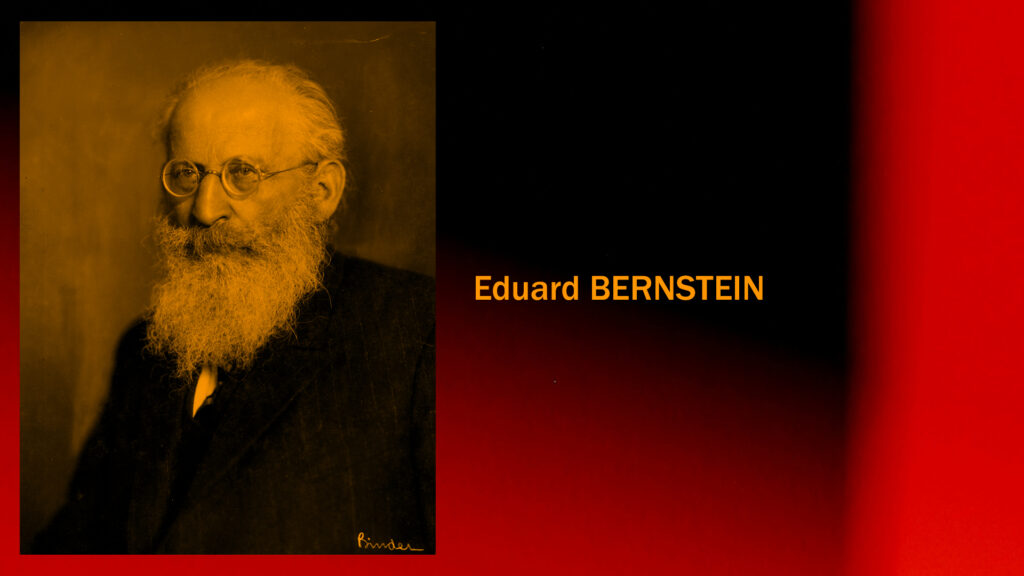
LB : Is the Left Alliance on the rise in Finland ?
Teemu : During the 2024 European Parliament election, the Left Alliance made a significant progress in Finland, growing from 6,89% to 17,32% since the last European elections6. At the same time, the far-right party tumbled from 13,83% to 7,60%. Seeing that the government is making economic reforms to maximize the profit of the capitalist class, and focuses on racism and anti-LGBTQ+ policies, some people might have switched back to voting left – especially a part of the working class the far-right pretended to defend. Furthermore, some electors of the Green League have started voting for the left, which appears more and more credible, even on ecological issues. Just like in Germany, the Finnish Greens are economically very liberal, whereas people are more and more convinced that we need a global transformation of the economic structure to fight the ecological devastation. This political awareness can be linked to the vitality of social movement organizing. The last main reason is the fact that the leader of the Left Alliance, Li Andersson, is really popular. And in Finland, voting is much more about personality than in Sweden, where one votes for a party list. It is therefore quite common that, depending on the popularity of the leader, left electors switch between a Green League, a Social Democratic Party, or a Left Alliance candidate.
LB : Are trade unions also moving further to the left ?
Teemu : Unfortunately, Finnish trade unions only defend the economic interests of their members, without any transformative ambition for society as a whole. It is nothing like the Central Organisation of Swedish Workers [Sveriges Arbetares Centralorganisation], a Swedish trade union very active in defending immigrant workers and encouraging direct actions by its members. In Finland such initiatives only come from the extra-parliamentary left. The SAK7 does not initiate any political discussion. They are mainly trying to strike ‘good deals’ for the employees they represent. Even if trade unions have actively opposed the full blown attack on workers’ rights of the far-right, when you are always on the defending side, you are losing the battle: the far-right has already managed to loosen up the rules to fire workers, to stop the reimbursing the first sick day of workers, and limiting severely the right to strike.
LB : How does the Finnish political consensus you mentioned earlier changes the way the left fight ?
Teemu : Unlike in Paris, we do not mix molotov-cocktails. The political consensus is deeply rooted in the confidence the Finnish society has in growth, in a regulated market economy, and in the myth that we are all from the middle class. Since the 90s’ recession and the 2008 economic crisis, poverty has increased, huge cuts were made to the public sector, and in Finland, the Earth Overshoot Day8 is now the 12th of April. To cope with this situation, instead of demanding a systemic change, trade unions try to stick to the pieces left of the old welfare state. Due to the longstanding political consensus, people are still negotiating, but now it is not for better working and living conditions, it is for the smaller evil. Compromise is never halfway between right and left, as we have seen, but between right and further right. It never benefits the people. This consensus is kind of blackmailing democracy. People are legitimally afraid of the far-right, so they vote for Macron against Le Pen, Harris against Trump, or Pekka Haavisto against Alexander Stubb9. And now people begin to realize that these compromises are just one step further right, leading to two steps further right. We need to stop feeding this circle and focus on setting a new agenda for the people. Otherwise, the right-wing can pretend people support its political agenda by agreeing to such compromises, and other parties can use it against the left, just like social democrats do, by saying right politics is what people wants !
LB : In what way do the relationship between Finland and Russia affects Finnish politics ?
Teemu : In Finland, there is a strong opposition to the communist left, which is still associated with the Civil War10, and with the USSR, which invaded the country during the Winter War (1939-1940)11, followed by the Continuation War (1941-1944)12. It led to the idea that the left is inherently pro-Russia, even if it is the right-wing parties that wanted in the 2000s to develop economic ties with Russia, a time during which Putin’s regime was prosecuting human right activists. In 2006 it was of course the left and anarchists who organized protests against the assassination of Anna Politkovskaïa13 and repression of other activists. Nevertheless, when the left wanted to open a discussion about Finland joining NATO14 last year, we could see that these kind of associations still operate in the public debate. Left sympathizers are either naïve or unpatriotic, selling in both cases the country to Putin! But what does it mean to be in a military alliance led by the United States, where Donald Trump could be, again, president? Or Kamala Harris, who unconditionally support Israel? Do we even get the security guarantees that were the main argument for joining the alliance ? When the Defense Cooperation Agreement was signed between Finland and the United States, it enabled the US to open military bases in which Finnish law does not apply. We can now have the CIA operating on Finnish soil for “advanced interrogations”, just like they did in Abu Ghraib or Guantanamo.
LB : What should the left do now to fight the far-right ?
Teemu : The Left Alliance victory at the European elections had a lot to do, in my opinion, with extra-parliamentary organizing. In universities, the Independent Left, a student organization, actively mobilized people to occupy universities, first against the governement’s austerity politics, and then against the genocide in Gaza. The environmental movements have done an amazing job in mobilizing and politicizing people. In Finland, the cultural sector has long been left-oriented and actively initiated events which made the left look like the coolest thing for young humanists. Yet culture is, of course, not a silver bullet : we may become more inclined to say what we feel about doing things, instead of doing it. Left must regain the vote of the traditional working class that is often far away from cultural scenes of major urban centers. Finally, we must keep pressure on left parliamentarians to be more accountable to social movements. During Marin government, civil society at large trusted on her, while we should have been more critical of her government’s doings.
LB : Is there a way to reach workers who don’t vote for the left anymore ?
Teemu : In Finland, most left-wing voters live in cities, are university educated, and mostly female. In comparison, in Sweden, the social movement is more connected to the working class: to look cool in political circles over there, if I may exaggerate a little bit, is not to be hippie artist from local equivalent of Montreuil, but a proper industry union organizer. Political discussions in left-wing circles in Finland exclude the working class, by using a certain vocabulary or just by the topics we focus on. In my opinion, we shouldn’t reject people just because they eat meat or don’t know the latest vocabulary. By doing this, we are just patronizing people. People should not try to address the working class to educate them, but rather to learn something from them. Furthermore, if we want to limit international trade, it will affect the wealthiest, but also the working class. We must resolve this problem of capitalism if we want to convince them to join us.
B. LEFT AND FINLAND IN CULTURE
LB : What is Libero ?
Teemu : Libero is the official membership journal of the Left Youth15, which is published four times a year. It is a political and cultural magazine which subjects change according to its editor-in-chief. My predecessor was more inclined and certainly merited to speak about aesthetics and arts, whereas I am myself more into social movements. Libero is an institution in Finland and because there are not so many cultural papers overall, it is read by the left in general. I have been editor-in-chief for nearly two years, but this issue we are working on will be the last one. The increase of print and post prices as well as the fact that the far-right government cut funding from journalism and culture means that Libero has unfortunately come to an end.
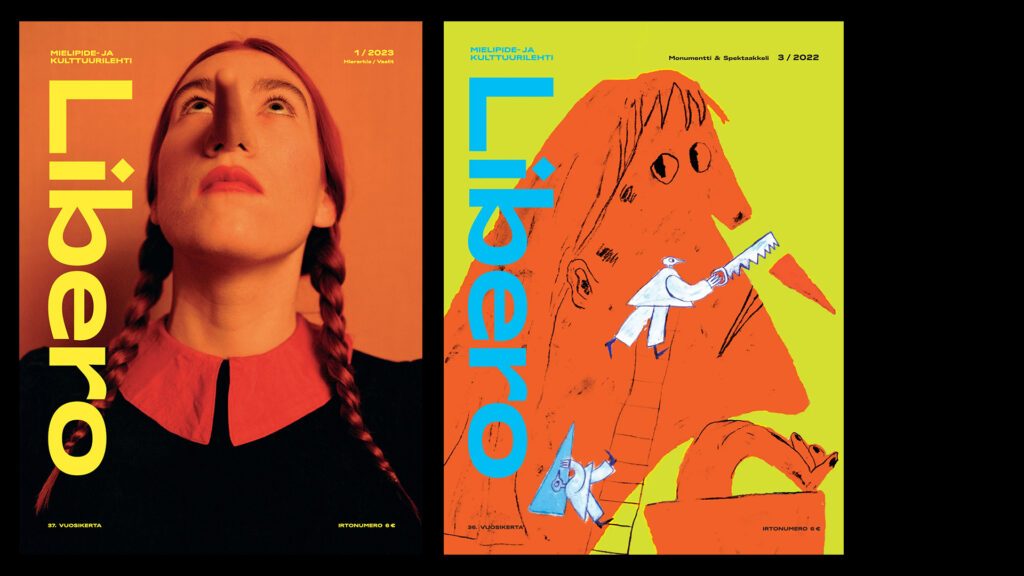
LB : How Libero contributes to the struggles of the left ?
Teemu : One important feature of the magazine is that the contributors are young people. The paper always intended to help them grow into the public debate, as journalists, authors, critiques, essayists, but also illustrators, by offering them an editorial support and a financial compensation, even if disrespectfully small, for their work. Under my term as editor-in-chief, I would like to think that we have been a place for left critique of the mainstream left ideas, with article about ecosocialism, anarchism, and critique of the liberal positions by left parties.
LB : Can you present the left-wing cultural landscape here in Helsinki ?
Teemu : There are places, like Bar Tÿpo, an ancient industrial building which now hosts a bookshop, a café and literature events. There are also journals, like the official newspaper of the Left Alliance, called Kansan Uutiset, which means “The People News”. It is really good on politics. Those who read English should definitely check out NO NIIN Magazine, that pushes forward critical political and cultural discussion from internationalist, feminist, and anti-imperialist angles. There are also cultural reviews, like Nuori Voima, and philosophical ones, like Niin & Näin. We also have poetry like Tuli ja Savu and more critical scholarship-oriented ones like Tiede ja Edistys, published by Tutkijaliitto. They have become really popular! They have organised reading circles on, among others, Achille MBembe and Paul B. Preciado !16
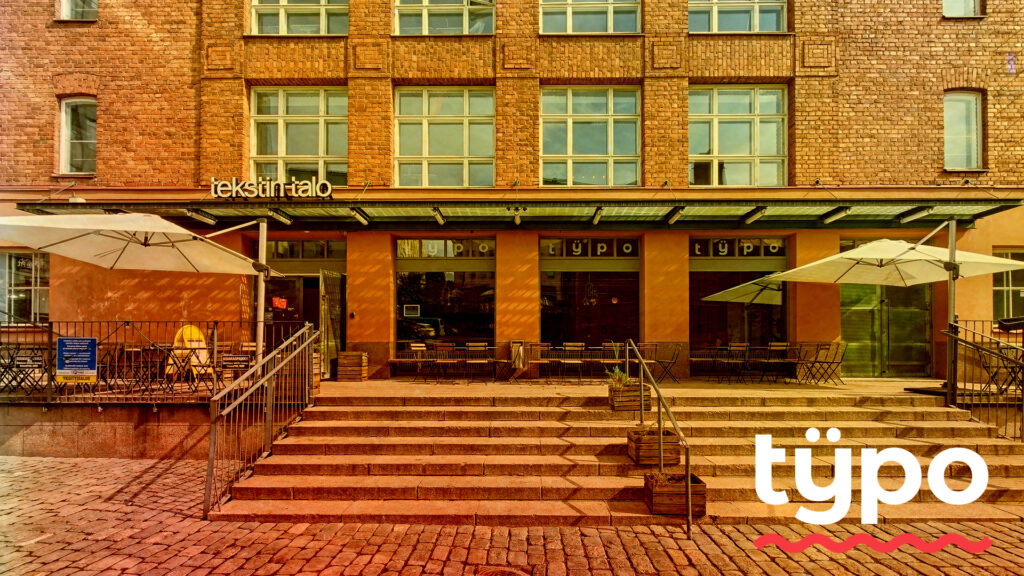
LB : Do you think art should play a role in politics ?
Teemu : Asking for a political role from art because the left is losing can be like waiting for artists to save us with their creative stroke of brush, because our political tools are not sharp enough. But by hopeful thinking, we may risk ruining art. Everybody is preoccupied by the climate change, but making a song about it, where you state the obvious, doesn’t make your art good just because it defends the right opinion. I think artists should be more confident about focusing on aesthetics in their practice. To me, trying to make something beautiful and unique is not empty of political significance in an era characterized by homogenization in the form of genocides, ecological destruction and imperialist violence. I want to tell them: make art! Of course, this doesn’t mean that artists shouldn’t join social movements, but maybe they should do it not as artists, but as activists, as countless already do. It could be more interesting if they use their skills to help social movement, rather than putting their art at the service of the cause.
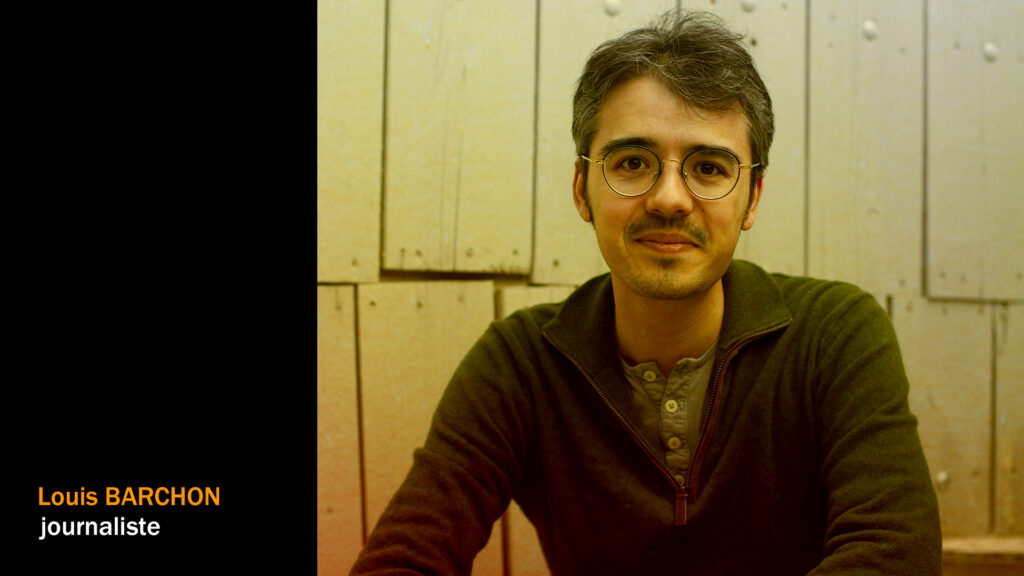
- Founded in 1990, heir of the Communist Party of Finland, it is now the leftmost parliamentarian party in Finland. ↩︎
- Political and cultural movement which emerged in the 1960s, in opposition with stalinist communism. It contributed to extend social struggles of the marxist left to feminism, gay rights, antiracism and ecology. ↩︎
- Eduard Bernstein (1850-1932) believed that socialism could be achieved in a progressive and peaceful way through gradual reforms of the capitalist system. ↩︎
- In particular regarding the territory of indigenous Sámi people, in the north of the country. ↩︎
- Chairperson of the Left Youth [Vasemmistonuoret] from 2022 to 2025. ↩︎
- In Finland, the Left Alliance Just Trounced the Far Right: https://jacobin.com/2024/06/finland-left-alliance-european-elections ↩︎
- The Central Organisation of Finnish Trade Unions [Suomen Ammattiliittojen Keskusjärjestö] is the main trade union confederation in Finland, with more than 800 000 individual members. ↩︎
- Estimated by the NGO Global Footprint Network, this date refers to the day from which the country’s resources consumption exceeds the annual capacity of this country to regenerate it. ↩︎
- Pekka Haavisto was the liberal Green League candidate competing against the conservative Alexander Stubb for the presidency of Finland in 2024. ↩︎
- Following October Revolution and independence of Finland, the Reds and Whites fought in 1918 for the control of the country, resulting in the victory of the Whites ↩︎
- From the 30th of November 1939 to the 13th of March 1940, USSR invaded Finland and gained 9% of the country territory. ↩︎
- From the 25th of June 1941 to the 19th of September 1944, Finland joined Germany in its war against USSR. ↩︎
- Russo-american journalist assassinated for her denunciation of human rights attempts in Russia and Chechnya. ↩︎
- Finland became a full member of NATO on the 4th of April 2023. ↩︎
- Political youth organization of the left since 1944, which members are between 14 and 30 years old. Li Andersson was her chairperson between 2011 and 2015. ↩︎
- French philosopher known for his writing Testo junkie, where he speaks about his voluntary ingestion of testosterone experiment. ↩︎

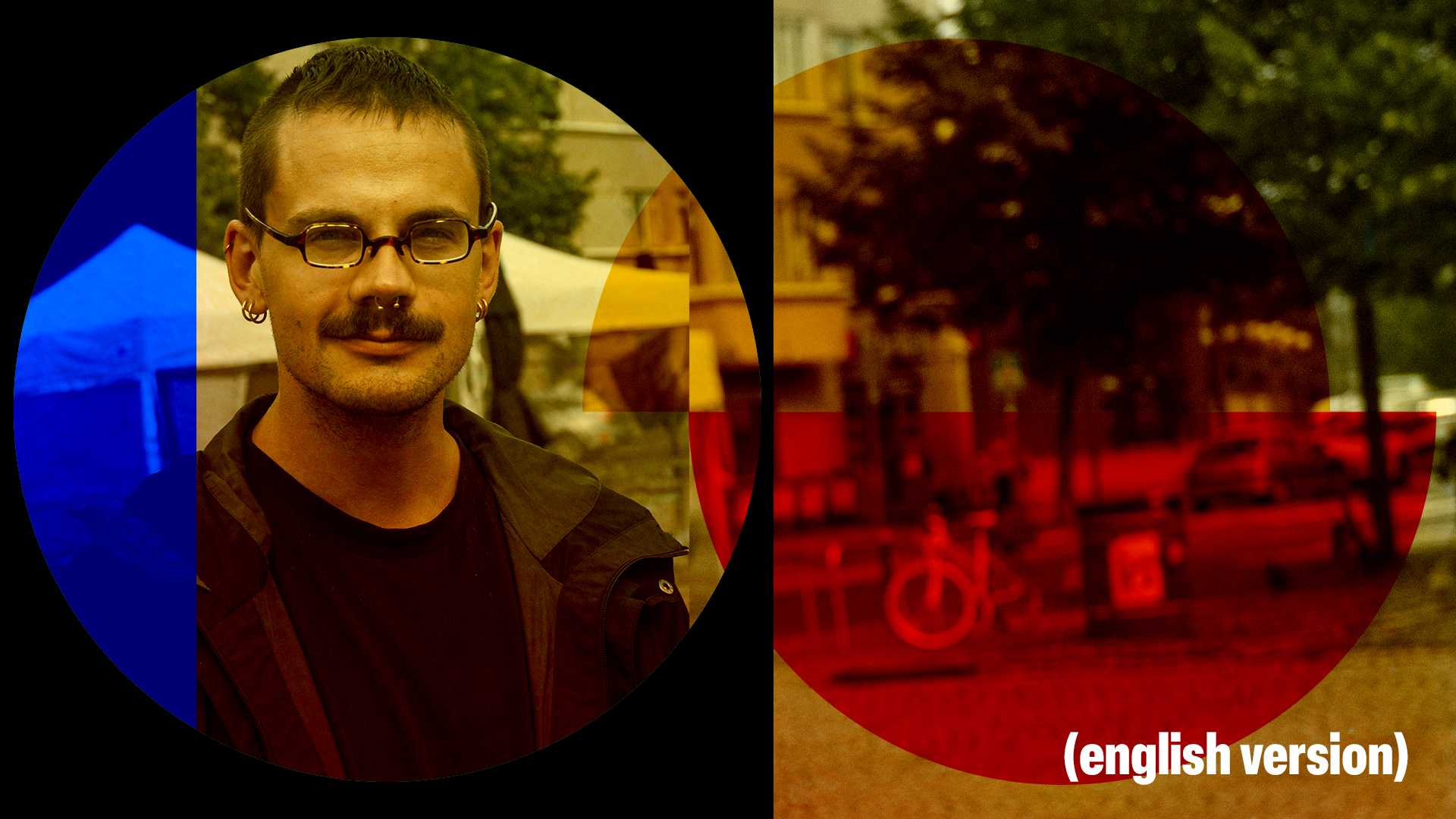
Laisser un commentaire
Vous devez vous connecter pour publier un commentaire.